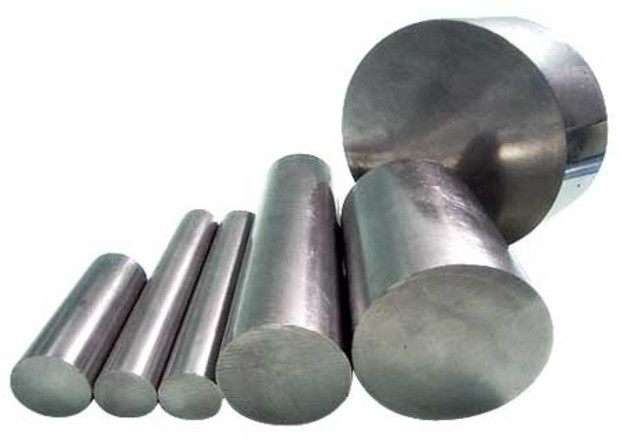Aluminium alloys: Advancements and applications in engineering and construction
Contributed by: Team AL Circle
2024-06-01
Rapid urbanisation and infrastructural development have spiked the global demand for aluminium and its alloys. The core industries that heavily use aluminium alloys are the engineering and construction industry. Thanks to aluminium's versatility, today, aluminium alloys are everywhere, from cars to rockets and buildings to bridges. This article will give the reader a peek into the advancement of aluminium alloys and their applications across the engineering and construction industries.

Have you ever wondered why the engineering and construction industry heavily relies on aluminium alloys?
Aluminium is a highly sought-after material in the engineering and construction sector because of its incredible strength-to-weight ratio. Aluminium alloys are lighter than steel and yet have the strength required for buildings and constructing other structures. Aluminium alloys are also flexible and can give the desired shape to achieve unique structures. Moreover, aluminium is a heat- resistant and non-corrosive material. Therefore, structures made from aluminium alloys can withstand extreme conditions without undergoing damage. Once mixed with other metals, aluminium alloys gain the capabilities of those metals as well, and composite material has advanced properties. These composite metal alloys can address various engineering and construction concerns.
High-strength aluminium alloy by Alcoa
Alcoa introduced the world to superior aluminium-lithium alloys that revolutionised lightweight in the aircraft sector. It has the number one market position in aluminium-lithium extrusions and a significant position on the Airbus A380, Airbus A350, Boeing 787, and Gulfstream G650. Alcoa produces single-piece wing skins, including wide-body aeroplanes, fuselage skins, wing stringers, floor beams, seat tracks and other components. In late 2022, Alcoa again made headlines with its new line of versatile, high-strength aluminium alloys. The Company’s innovations include the introduction of a new high-strength, 6000 series alloy, A210 ExtruStrongTM that delivers benefits across a wide range of extruded applications, including transport, construction, industrial, and consumer goods.
A210 ExtruStrong is for all industries
A210 ExtruStrong was first introduced as a material for crash protection. It is 40% stronger than other aluminium alloys and has extraordinary corrosion-resistant properties. Moreover, the A210 ExtruStrong can be used to make thinner wall structures after extrusion. It also has better anodising results and tensile strength. The A210 ExtruStrong has automotive applications as well as uses in construction, for instance, in making new, sturdy bridges. Finally, the alloy's lightweight feature makes it a perfect choice for bicycle manufacturing.
Award-winning aluminium alloy for electric vehicles
Alcoa's next ground-breaking, high-performance aluminium alloy, C611 EZCast, is revolutionising die-casting and single-piece castings for electric vehicles. NIO, one of China's primary EV manufacturers, is utilising C611 EZCast for their future casting goals. One of the key strengths of this aluminium alloy is that it does not need heat treatment, which saves energy and resources and reduces carbon footprint. C611 EZCast also simplifies the care manufacturing process. The alloy has been used to create floor frames and longitudinal beams. Alcoa has licensed the exclusive rights of producing and supplying C611 EZCast to Shanghai-based company CSMet New Material Group Co. C611 EZCast is used to design a rear floor, 20% lighter than old designs comprising several parts.
Aluminium alloy application in NASA
Aluminium is not new to the rocket engineering sector. The Russian satellite Sputnik journeyed through outer space because of its aluminium build. Aluminium has all the properties needed to build sturdy rockets, and NASA is unlocking the power of the lightweight metal through innovation. Previously, NASA used aluminium-lithium alloy in the Orion spacecraft. NASA and Elementum 3D developed a novel aluminium alloy, A6061-RAM2, a general-purpose aluminium alloy with excellent heat resistance and ductility. With aluminium as its base metal, A6061-RAM2 contains various proportions of copper, magnesium, chromium, and silicon.
Additionally, it contains 2% titanium and boron carbide. Elementum 3D is a pioneer in 3D printing, and together, the organisations are using A6061-RAM2 to build a nozzle for the rocket. Aluminium alloys and 3D printing are opening new avenues for rocket engineering.
Research-led innovation in the aluminium sector
Increased utilisation of aluminium has led to the research and development of the structural ability of the metal as well as the formation of new alloys. Aluminium is a valuable material in present times, especially when industries are trying to achieve sustainability without compromising on quality. Besides being a versatile metal, aluminium also has highly sought-after eco-friendly traits. Right now, the aluminium industry has entered into a new era where innovation has taken the front seat. The development of various aluminium alloys and the ingenious application of old and new alloys will continue to surprise and lead the engineering and construction industries, opening up a world of exciting possibilities.
Categories
Raw Materials
Scrap
Consumables
Primary Aluminium
Secondary Aluminium
Equipment
Technology
Downstream Products
Finished Products
Utilities
Services
Others
Recent Blogs
Subscribe to newsletter
Connect with us












